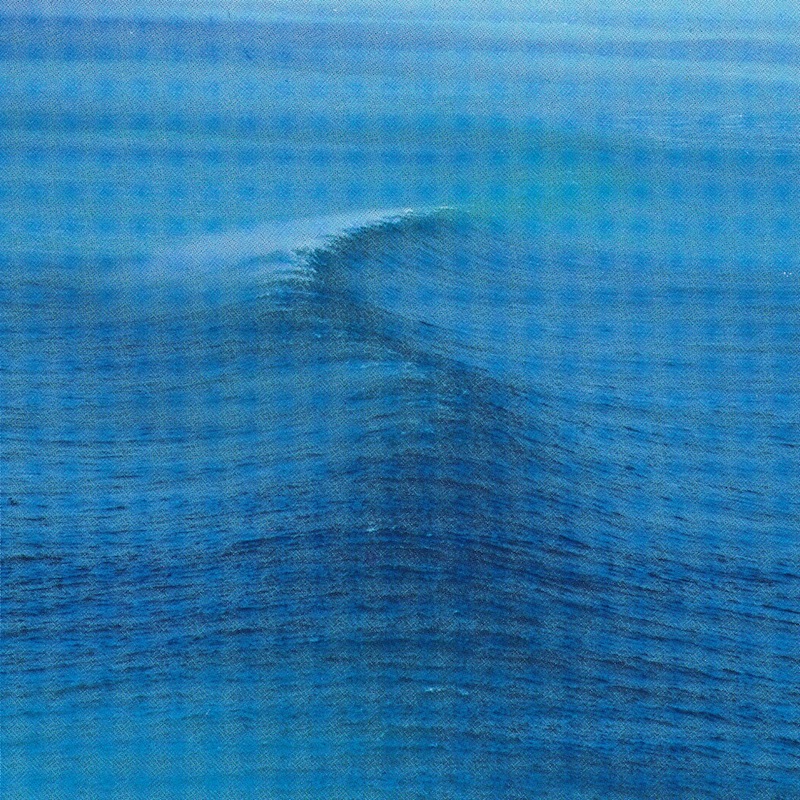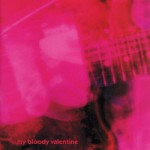Ride : Nowhere

Few bands throughout history have been as aptly named as Ride. The Oxford quartet, whose stage presence likely contributed to the birth of the word “shoegazer,” gave listeners exactly what their four-letter moniker promised. With a beefy arsenal of effects pedals, these gents could take your ears on a hell of a journey, with dense, yet somewhat ethereal sounds creating the illusion of soaring, weightlessly, yet at inhuman speeds, over the ever-diminishing earth below. Having experienced this melodic bliss, it’s easy to understand all the critical fuss when their debut album Nowhere was released.
In the 18 years since Nowhere was first released, several critics in evaluating what came thereafter (notably My Bloody Valentine’s Loveless) dubbed it the second best shoegazer album of all time. In a sense, it’s a bit unfair to peg the album as a perennial runner-up. But then again, its competition trumped all of pop music in general, and there was certainly no dearth of stunning music to have been released during the shoegazer era. All MBV implications aside, however, Nowhere is a masterpiece of sonic squalls. It’s a guitar album for those who grow weary of the rigid constraints of a fuzzbox. It’s a psychedelic album for those who have never had to worry about getting hummus in their beards. It’s an album of lullabies for those who can be lulled and soothed by the sound of crashing tidal waves. It’s brilliant is what it is.
Though much of the bands in the shoegazer era were marked mostly by their ambience and layers of effects, Ride succeeded by bolstering those effects with stellar songwriting. Album opener “Seagull” is a prime example—Andy Bell and Mark Gardener’s guitars buzz and zoom past each other like fighter jet choreography, as Steve Queralt rolls out a “Taxman” bassline and Loz Colbert pounds a mighty thunder upon his toms. It’s a fierce opener, one almost prone to push the listener into sensory overload, but its sound is aural ecstasy. In a sense, Ride was the missing link between The Stone Roses and My Bloody Valentine, and this song is proof of that. The shorter “Kaleidoscope” is a faster, power-pop leaning track with clean, shimmering sheets of guitar, cascading and crashing about.
Ride’s ballads, much like their rockers, likewise were both multi-layered and gorgeous. “In A Different Place” builds up from sparkling, Byrds-like riffs beneath Gardener’s gentle croon, into a powerful, distorted chorus. Similarly, though one may be hesitant to label it a ballad due to Colbert’s ultra-heavy drums, “Dreams Burn Down” is an absolutely beautiful track, with a glimmering guitar lead juxtaposed against an immense wall of fuzz. The exotic, 12-string riffs of “Paralysed” sound reminiscent of Johnn Marr’s talented axework, while the album’s closer and the band’s best-known song, “Vapor Trail,” spreads its wings as the band sets off soaring again. It’s a stunning and majestic feat of melody, made even more delicate by its use of cello.
Looking back, it seems only appropriate that Nowhere was released in 1990, as it seemed to signify a shift in the direction that rock music would take during the decade, particularly in the U.K. Where C-86 pop jangle was once king, distortion and phase shifters were set to take over, if only for a short period of time. But there are scant few British indie rock records (and American albums for that matter) released in the ’90s and beyond that don’t carry at least a little bit of Ride’s effects-laden glory in them.
Similar Albums:
 The Stone Roses – The Stone Roses
The Stone Roses – The Stone Roses
 The Jesus and Mary Chain – Darklands
The Jesus and Mary Chain – Darklands
 My Bloody Valentine – Loveless
My Bloody Valentine – Loveless
Jeff Terich is the founder and editor of Treble. He's been writing about music for 20 years and has been published at American Songwriter, Bandcamp Daily, Reverb, Spin, Stereogum, uDiscoverMusic, VinylMePlease and some others that he's forgetting right now. He's still not tired of it.

